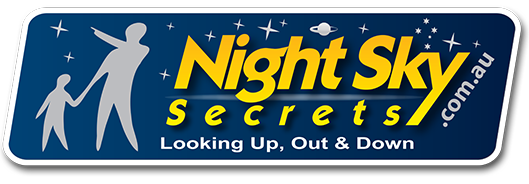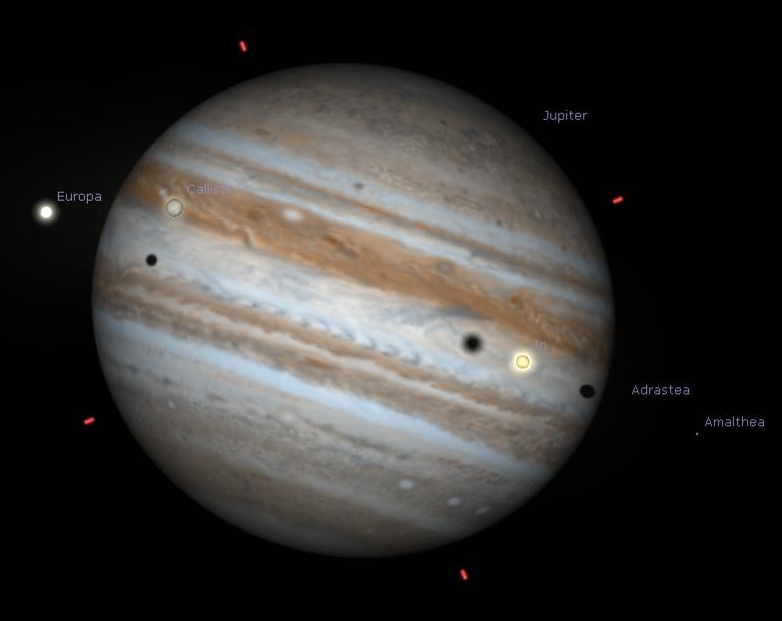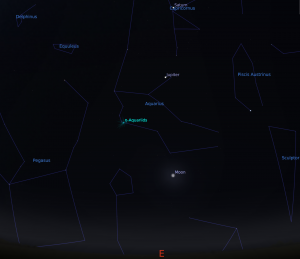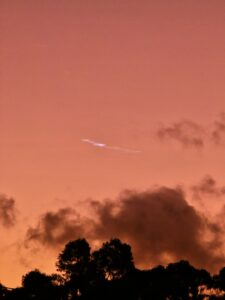
Parade of the Planets
September saw Jupiter come to opposition at its largest in many Decades. This continues to be the case in October with Jupiter being a bright beacon in the eastern evening sky at almost Mag: -3, Making it a great target for a telescope of any size. The parade of its moons Ganymede, Io, Europa & Callisto are a nightly spectacle to behold, especially when you see their shadows transit across the face of the moon.
Saturn continues to ride high in the early evening sky and is always a fine sight to behold, with its breathtaking rings, its hard to beat ! Mars in Taurus is growing in brightness and stature as it heads towards its December opposition, when surface features will again become visible.
Spring Meteors
We are not without meteor showers this month either.
The Southern Taurids which are active Sept10th to Nov20th will peak early this month on the 10th with low rates of <5per hour but with a higher than average number of slow fireballs courtesy of the large, short periodic comet Enke leaving its gravelly debris
The Orionids also peak a bit later in the month on the 21st, with the waning cresent moon the only interference from 3:30 am, these are fast and bright up to 20/hr at the peak, with their source being the famous comet Halley.
The Constellations
As the southern cross and Scorpius depart our evening skies, diving into the west late evening, they are replaced in the east with Orion the hunter who rises once the cunning Scorpius (who was The cause of Orion’s earthly demise) is safely over the western horizon! Orion gives us one of the brightest nebula in the night sky with the great nebula in orion (M42) being spectacular even in a small telescope.
In the northern sky the obvious square of Pegasus the winged horse heralds the beginning of our Andromeda Galaxy observing season. At 2.5 million light years we see the light from Andromeda arriving to delight a species (us) that was certainly not the dominant species on the planet when that light started out on its journey to us.

A good pair of 15×70 binoculars or a low powered rich field telescope around 20x will give you the best all encompassing view of the Andromeda Galaxy.
Now is a great time to be out under a dark night sky.
we are getting well stocked for telescopes and binoculars in time for Christmas, so now is the time to get your order in while stocks last before the Christmas rush.
I hope you get some clear skies sometime soon with all the rain sweeping across the whole country in Australia.



